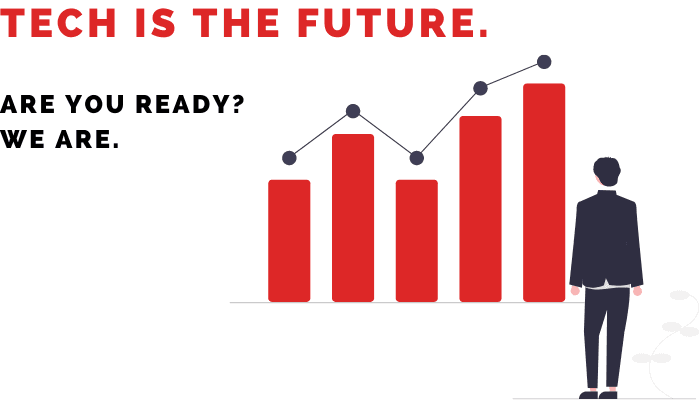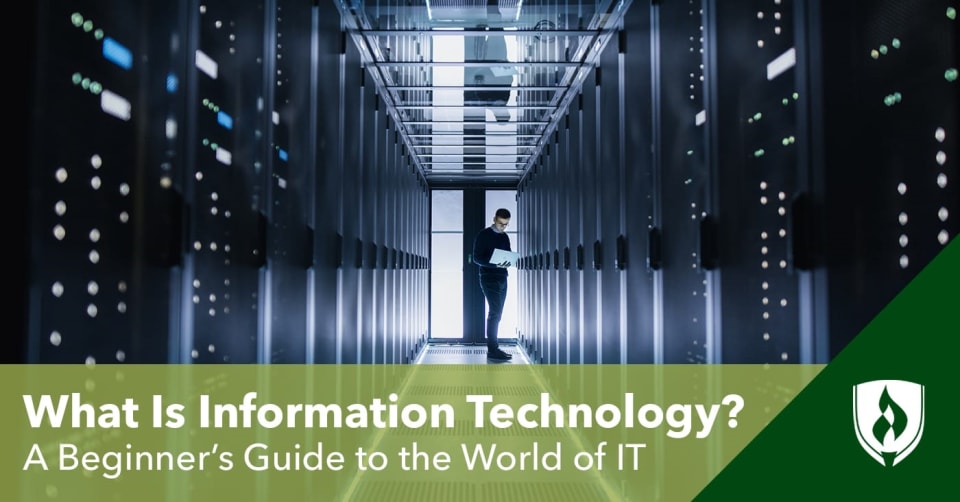Are you a beginner in the world of technology and find yourself feeling overwhelmed by the complex jargon and concepts? Fear not, because “Technology Explained: A Beginner’s Guide To Understanding Tech” is here to help you navigate this vast and ever-evolving field. This article is designed to break down the intricacies of technology in a way that is easy to understand, making it accessible for anyone who wants to expand their knowledge and feel confident in this digital era. Whether you’re curious about smartphones, social media, or the inner workings of the internet, this beginner’s guide will empower you to grasp the foundations of technology and embark on a journey of technological literacy.

This image is property of cdn.uvaro.com.
1. Hardware
1.1. What is hardware?
Hardware refers to the physical components of a computer system that you can touch and feel. It includes devices such as the monitor, keyboard, mouse, and CPU (Central Processing Unit). These components work together to enable the computer to carry out various tasks.
1.2. Different types of hardware
There are several types of hardware that serve different purposes. The main categories include input devices, output devices, storage devices, and processing devices. Input devices, like keyboards and mice, allow you to input data into the computer. Output devices, such as monitors and printers, display or provide output from the computer. Storage devices, like hard drives and USB flash drives, are used to store data for future use. Processing devices, such as CPUs and GPUs (Graphics Processing Units), process and manipulate data within the computer.
1.3. Basic components of a computer
A computer consists of several basic components, including the CPU, motherboard, memory (RAM), storage devices, and power supply. The CPU, often referred to as the “brain” of the computer, performs most of the calculations and tasks. The motherboard connects all the components together and facilitates communication between them. Memory, or RAM, temporarily holds data and instructions that the CPU needs to access quickly. Storage devices store data and programs. The power supply provides electrical power to all the components.
1.4. Input and output devices
Input devices allow you to enter data into the computer. Common input devices include keyboards, mice, scanners, and webcams. Output devices, on the other hand, display or provide output from the computer. Examples of output devices include monitors, printers, speakers, and headphones. These devices enable you to interact with the computer and receive information in a user-friendly manner.
2. Software
2.1. What is software?
Software refers to the programs and instructions that tell the computer what to do. It is a collection of code written in programming languages that enable the computer to perform specific tasks. Without software, computers would be just pieces of hardware with no functionality.
2.2. Types of software
There are two main types of software: system software and application software. System software includes the operating system, which manages the computer’s resources and provides a platform for other software to run on. Application software includes programs like word processors, web browsers, and media players, which are designed for specific tasks or user needs.
2.3. Operating systems
An operating system (OS) is a type of system software that manages the computer’s hardware and software resources and provides a user interface for interaction. Some popular operating systems include Microsoft Windows, macOS, and Linux. The OS handles tasks such as memory management, file system management, device driver communication, and running and managing applications.
2.4. Applications and programs
Applications, also known as programs or software applications, are developed to perform specific tasks or functions for the user. Examples of applications include web browsers, email clients, graphic design software, and video games. These programs utilize the functionalities provided by the operating system and often have a graphical user interface (GUI) for ease of use.

This image is property of content.instructables.com.
3. Internet and Networking
3.1. What is the internet?
The internet is a global network of interconnected computers and servers that allows for the sharing of information and communication. It enables users to access a wide range of resources, including websites, email services, online videos, and social media platforms. The internet has become an integral part of our lives, revolutionizing how we communicate, conduct business, and access information.
3.2. How does the internet work?
The internet works through a system of interconnected networks. When you send a request for a webpage, email, or any other data, it is divided into small packets of information. These packets travel through various routers and switches across the internet until they reach their destination. The data is then reassembled at the destination and displayed or processed according to the user’s request.
3.3. Types of internet connections
There are different types of internet connections available, including dial-up, DSL (Digital Subscriber Line), cable, fiber-optic, and wireless connections. Dial-up connections use telephone lines to connect to the internet, but they are slow and becoming less common. DSL and cable connections transmit data over existing phone or cable TV lines, offering faster speeds. Fiber-optic connections use thin strands of glass or plastic to transmit data as light, providing even faster speeds. Wireless connections, such as Wi-Fi and mobile data, allow users to connect to the internet without the need for physical cables.
3.4. Networking basics
Networking is the practice of connecting multiple computers and devices to share resources and information. Networks can be categorized into local area networks (LANs) and wide area networks (WANs). LANs are typically used in homes, offices, or small areas and connect devices within a limited geographical area. WANs, on the other hand, connect multiple LANs over a larger geographical area, often using telephone lines, fiber-optic cables, or satellite connections. Networking plays a crucial role in enabling communication, file sharing, and resource sharing between computers.
4. Data and Storage
4.1. What is data?
Data refers to any information or facts that can be stored, processed, or transmitted by a computer or a digital device. It can come in various forms, such as text, images, videos, and audio. Data is at the core of all computing activities and is processed by software to generate useful information.
4.2. Types of data storage
There are different types of data storage devices available, including hard disk drives (HDDs), solid-state drives (SSDs), and cloud storage. HDDs use magnetic disks to store data and are commonly found in desktop computers and laptops. SSDs, on the other hand, use flash memory chips and offer faster read and write speeds. Cloud storage allows users to store and access their data over the internet on remote servers, providing remote access and backup capabilities.
4.3. Understanding file formats
File formats define the structure and organization of data stored in files. Different file formats are used for different types of data. For example, text files use formats like .txt or .docx, images use formats like .jpeg or .png, and videos use formats like .mp4 or .avi. Understanding file formats is important as it allows compatibility between different software applications and devices.
4.4. Backing up and securing data
Backing up your data is essential to protect against data loss. Regularly creating backups ensures that you have a copy of your important files in case of hardware failure, data corruption, or accidental deletion. There are various methods for backing up data, including external hard drives, cloud storage, and network-attached storage (NAS). It is also important to implement security measures, such as using strong passwords and encryption, to protect sensitive data from unauthorized access.

This image is property of Amazon.com.
5. User Interfaces
5.1. What are user interfaces?
A user interface (UI) is the means through which a user interacts with a computer or a software application. It provides a way for users to provide input and receive output in a user-friendly manner. User interfaces can be visual, auditory, or tactile, depending on the device and the user’s needs.
5.2. Graphical User Interfaces (GUI)
Graphical User Interfaces (GUIs) are the most common type of user interface used in modern computing. They utilize visual elements such as icons, menus, windows, and buttons to facilitate user interaction. GUIs are known for their ease of use and intuitive nature, allowing users to interact with software applications using familiar metaphors and visual representations.
5.3. Command Line Interfaces (CLI)
Command Line Interfaces (CLIs) are text-based interfaces that require users to type commands to interact with the computer or a software application. CLIs provide more control and flexibility, allowing users to perform complex tasks quickly by typing specific commands and parameters. While they may be intimidating for beginners, CLIs are preferred by power users and developers due to their efficiency and scripting capabilities.
5.4. Touchscreen interfaces
Touchscreen interfaces are designed for devices that have a touch-sensitive screen, such as smartphones, tablets, and touchscreen computers. They allow users to directly interact with the screen by tapping, swiping, or pinching gestures. Touchscreen interfaces have become increasingly popular due to their intuitive nature and ease of use, enabling users to navigate and interact with software applications in a more tactile manner.
6. Mobile Devices
6.1. Introduction to mobile devices
Mobile devices, such as smartphones and tablets, have revolutionized the way we communicate, access information, and perform various tasks on the go. These devices are portable, compact, and capable of running a wide range of applications, making them an essential part of our daily lives.
6.2. Smartphones and tablets
Smartphones and tablets are handheld mobile devices that offer advanced computing capabilities, including internet connectivity, multimedia playback, and the ability to run various applications. Smartphones are primarily designed for communication purposes and feature cellular connectivity, while tablets provide a larger display and are more suited for multimedia consumption and productivity tasks.
6.3. Mobile operating systems
Mobile devices operate on specific operating systems designed for smaller, touch-enabled screens. Some popular mobile operating systems include Android, iOS, and Windows Phone. These operating systems provide a platform for developers to create applications specifically tailored for mobile devices, offering seamless integration and optimized performance.
6.4. Mobile apps
Mobile applications, commonly referred to as mobile apps, are software applications specifically designed to run on mobile devices. These apps allow users to perform a wide range of tasks, such as browsing the internet, checking emails, playing games, and accessing social media platforms. Mobile apps are typically available for download from app stores, offering users a diverse selection of applications to enhance their mobile computing experience.

This image is property of cdn.uvaro.com.
7. Computer Networks
7.1. What are computer networks?
Computer networks are systems that connect multiple computers and devices together to facilitate communication and resource sharing. Networks can be classified into different types based on their size, coverage area, and purpose. Computer networks enable efficient data transfer, file sharing, and collaboration among users on the network.
7.2. Local Area Networks (LAN)
A Local Area Network (LAN) is a network that connects devices within a limited geographical area, such as an office building, school campus, or home. LANs are commonly used to share resources like files, printers, and internet connections among multiple devices. They are relatively easy to set up and manage, offering fast data transfer speeds and low latencies.
7.3. Wide Area Networks (WAN)
A Wide Area Network (WAN) covers a larger geographical area and connects multiple LANs together. WANs rely on telecommunication services, such as leased lines, satellite links, or fiber-optic cables, to transmit data between different locations. WANs enable organizations to connect remote offices, branches, or data centers and facilitate interconnectivity across long distances.
7.4. Wireless networks
Wireless networks use radio waves or other wireless technologies to connect devices without the need for physical cables. Wi-Fi is a common form of wireless network used in homes, offices, and public spaces, allowing devices to connect to the internet wirelessly. Wireless networks offer convenience and flexibility, enabling users to access the network and the internet from any location within range.
8. Cybersecurity
8.1. What is cybersecurity?
Cybersecurity involves practices and measures taken to protect computers, networks, and data from unauthorized access, attacks, and damage. With the increasing reliance on technology, cybersecurity has become paramount to protect sensitive information and ensure the integrity and privacy of digital assets.
8.2. Types of cyber threats
There are various types of cyber threats that individuals and organizations face. These include malware attacks, such as viruses, ransomware, and spyware, that can infect computers and steal or encrypt data. Phishing attacks involve tricking users into revealing sensitive information, usually through deceptive emails or websites. Other cyber threats include hacking, identity theft, DDoS (Distributed Denial of Service) attacks, and data breaches.
8.3. Protecting your online presence
Protecting your online presence involves adopting security measures to prevent unauthorized access and protect your personal information. This includes using strong, unique passwords for each online account, enabling two-factor authentication, keeping software and operating systems up to date, using firewalls and antivirus software, and staying cautious while browsing the internet or opening email attachments. Regularly backing up important data and being aware of potential phishing attempts are also crucial to maintaining online security.
8.4. Best practices for online safety
To ensure online safety, it is important to follow best practices for cybersecurity. This includes regularly updating software and operating systems to patch security vulnerabilities, using reputable antivirus software to detect and remove malware, being cautious while clicking on unknown links or downloading files, and utilizing strong passwords and password managers to protect online accounts. Additionally, avoiding sharing personal or sensitive information on unsecured websites or public networks can help minimize the risk of online threats.

This image is property of www.rasmussen.edu.
9. Emerging Technologies
9.1. Artificial Intelligence (AI)
Artificial Intelligence (AI) refers to the development of computer systems that can perform tasks that would typically require human intelligence. AI technologies enable machines to learn, reason, and make decisions based on patterns and data. Examples of AI applications include voice assistants, image recognition systems, and autonomous vehicles.
9.2. Internet of Things (IoT)
The Internet of Things (IoT) is a network of interconnected physical devices, vehicles, appliances, and other objects embedded with sensors, software, and network connectivity. IoT devices can collect and exchange data, enabling remote monitoring and control. Smart homes, wearable devices, and industrial automation are some examples of IoT applications.
9.3. Virtual Reality (VR) and Augmented Reality (AR)
Virtual Reality (VR) and Augmented Reality (AR) technologies enhance users’ perception of reality by integrating computer-generated elements into the real world or creating immersive virtual environments. VR typically involves wearing a headset to experience a computer-generated simulation, while AR overlays virtual objects onto the real world through devices such as smartphones or smart glasses. These technologies find applications in gaming, education, training, and various industries.
9.4. Blockchain technology
Blockchain technology is a decentralized and distributed ledger system that securely records and verifies transactions across multiple computers. Each transaction is added to a “block” and linked to previous blocks, creating an unchangeable and transparent chain of data. Blockchain is most commonly associated with cryptocurrencies like Bitcoin, but its potential extends to other areas such as supply chain management, voting systems, and secure record-keeping.
10. Tech Ethics
10.1. Ethical considerations in technology
As technology continues to advance, ethical considerations become increasingly important. Ethical considerations in technology involve questions of responsibility, privacy, fairness, and the potential impacts of technology on individuals and society as a whole. It is crucial to consider how technology is developed, used, and regulated to ensure ethical decision-making and mitigate potential harm.
10.2. Privacy concerns
Privacy concerns arise with the widespread use of technology and the collection of personal data. Issues such as data breaches, unauthorized surveillance, and the monetization of personal information raise questions about privacy rights and the protection of individuals’ sensitive data. Striking a balance between the benefits of data-driven technologies and protecting users’ privacy is a key challenge in today’s digital landscape.
10.3. Social impact of technology
Technology has a significant impact on society, affecting how we communicate, access information, work, and interact with one another. It has the potential to bridge gaps, provide equal opportunities, and improve efficiency. However, it also poses challenges such as job displacement, social inequality, and the erosion of interpersonal connections. Considering the social impact of technology and addressing these challenges is essential for building a more equitable and inclusive future.
10.4. Balancing tech and personal well-being
In the age of constant connectivity, striking a balance between technology and personal well-being is crucial. Excessive screen time, digital distractions, cyberbullying, and the negative effects of social media can impact mental health, relationships, and overall well-being. Developing healthy technology habits, setting boundaries, and being mindful of the impact of technology on one’s life are important for maintaining a healthy and fulfilling lifestyle in the digital age.
